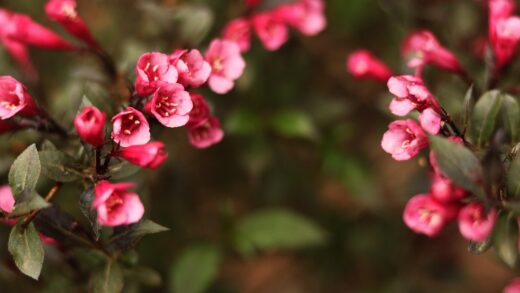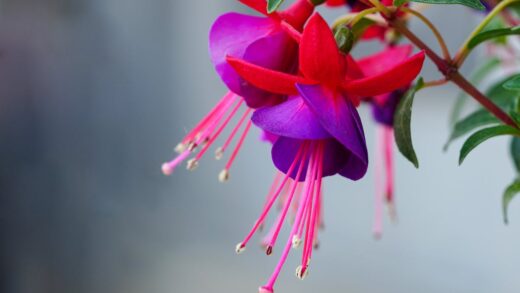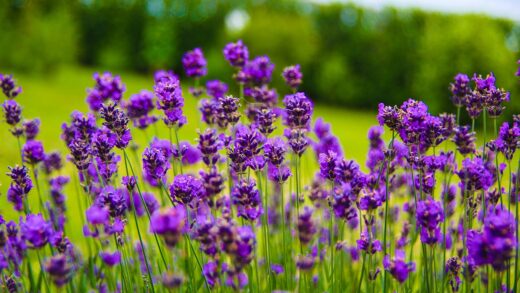Understanding and meeting the significant water requirements of Brugmansia is one of the most fundamental aspects of their successful cultivation. These lush, tropical plants, with their large leaves and rapid growth, are notoriously thirsty, especially during the warm, active growing season. Inadequate watering is a common reason for poor performance, leading to wilting, leaf drop, and a failure to produce their magnificent, trumpet-shaped flowers. Conversely, while they demand ample moisture, they are also susceptible to root rot if left in waterlogged conditions. Therefore, mastering the art of irrigation—providing the right amount of water at the right time—is essential for maintaining a healthy, vibrant, and floriferous angel’s trumpet. This involves understanding the factors that influence water needs and adopting a consistent and observant approach to watering.
The thirsty nature of Brugmansia
The primary reason for the high water demand of Brugmansia lies in their physical characteristics and rapid metabolism. The plants produce very large, soft leaves which have a vast surface area. Through a process called transpiration, water is released from tiny pores, or stomata, on the leaf surface. This is a natural and necessary process for the plant, but the sheer size of the foliage means that a significant volume of water can be lost to the atmosphere, especially on hot, sunny, or windy days. This high rate of transpiration must be balanced by an equally high rate of water uptake by the roots to prevent the plant from dehydrating.
During the peak growing season, from spring through summer, Brugmansia are in a state of vigorous growth, producing new stems, leaves, and, most importantly, their large, energy-intensive flowers. This rapid development requires a constant supply of water to transport nutrients from the soil to the various parts of the plant and to maintain turgor pressure, which keeps the stems and leaves firm and upright. When water is scarce, the first visible sign is often the wilting of the leaves, as the plant can no longer maintain this internal pressure. While the plant can often recover from brief periods of wilting once watered, repeated or prolonged water stress can cause permanent damage.
The origin of Brugmansia in the mountainous regions of South America also provides clues to their water needs. They are native to areas that often receive regular, ample rainfall, and they typically grow in soils that are rich in organic matter, which helps to retain moisture while still allowing for good drainage. In cultivation, we must aim to replicate these conditions by providing consistent and abundant water. This is particularly true for plants grown in containers, as the limited volume of soil in a pot can dry out much more quickly than garden soil.
It is this combination of large leaves, rapid growth, and their native habitat’s conditions that defines Brugmansia as a “thirsty” plant. Gardeners must recognize that watering is not a task to be performed on a rigid schedule but rather a response to the plant’s needs, which can change daily depending on the weather and the plant’s stage of growth. An observant eye and a consistent hand are the keys to keeping these magnificent plants properly hydrated and thriving.
More articles on this topic
Factors influencing water needs
The specific amount of water a Brugmansia needs can vary significantly based on several interacting factors. The most influential of these is the climate and prevailing weather conditions. During hot, dry, and sunny weather, the rate of transpiration increases dramatically, and the plant will require much more frequent watering. In contrast, during cool, cloudy, or humid periods, water loss is reduced, and the need for irrigation will be less. Wind is another important factor, as it can strip moisture from the leaves very quickly, increasing the plant’s water requirements.
The size and location of the plant also play a crucial role. A large, mature Brugmansia with a dense canopy of leaves will use far more water than a small, young plant. Similarly, a plant grown in a container will need to be watered much more often than one planted in the ground. The soil in a container heats up more quickly and is exposed to air on all sides, leading to faster evaporation. The type of container also matters; porous pots like terracotta will dry out faster than plastic or glazed ceramic ones. The plant’s location in the garden, whether in full sun or partial shade, will also have a direct impact on how quickly its soil dries.
The type of soil or potting medium is another critical variable. A well-draining, sandy soil will require more frequent watering than a heavier soil with a higher content of clay or organic matter. The ideal growing medium for Brugmansia is one that can retain a good amount of moisture to satisfy the plant’s thirst, but also has excellent drainage to prevent the roots from becoming waterlogged. Amending the soil with materials like compost or coir can significantly improve its water-holding capacity, creating a more resilient environment for the plant’s roots.
Finally, the plant’s stage in its annual growth cycle dictates its water needs. During the active growing period in spring and summer, when the plant is producing leaves and flowers, its water demand is at its peak. As autumn approaches and temperatures cool, the plant’s growth slows, and its water requirements decrease accordingly. During the winter dormancy period, whether the plant is stored in a dark garage or kept as a houseplant, its water needs are minimal, and watering should be reduced drastically to prevent root rot.
More articles on this topic
Best practices for watering
The most effective approach to watering a Brugmansia is to water deeply and thoroughly whenever the top few centimetres of soil feel dry to the touch. This method ensures that the entire root ball becomes saturated, encouraging the roots to grow deep into the soil, which makes the plant more stable and drought-tolerant. Apply water slowly at the base of the plant until it begins to run out of the drainage holes at the bottom of the pot. This is a clear sign that the soil is fully moistened. For plants in the ground, a long, slow soak is more beneficial than a quick sprinkle.
It is generally best to water in the early morning. This timing allows the plant to hydrate before the heat of the day, preparing it for the increased transpiration that will occur in the sunlight. Watering in the morning also ensures that the foliage has time to dry before nightfall, which can help to prevent the development of fungal diseases. Watering in the evening is the second-best option. Midday watering should be avoided if possible, as more water is lost to evaporation and cold water on sun-baked leaves can cause stress.
For container-grown Brugmansia, it is essential to check the soil moisture daily during the summer months. It is not an exaggeration to say that a large plant in a pot may require watering twice a day during a heatwave. Do not rely on a fixed schedule, but rather on the actual condition of the soil. Lifting the pot can also be a good indicator; a well-watered pot will feel significantly heavier than a dry one. Using a self-watering container can also be an effective strategy for providing a consistent supply of moisture.
When watering, try to avoid wetting the foliage and flowers excessively, especially in the evening. While rinsing the leaves can help to dislodge pests like spider mites, persistently wet foliage can create an ideal environment for fungal diseases to take hold. Using a watering can with a long spout or a drip irrigation system allows you to direct the water precisely to the root zone where it is needed most, which is a more efficient and healthier practice for the plant.
Recognizing signs of incorrect watering
The Brugmansia plant will provide clear visual cues if its water needs are not being met correctly. The most obvious sign of underwatering is wilting. The large leaves will droop and appear limp. If caught early, the plant will usually perk up within an hour or so of being watered thoroughly. However, if the wilting is severe or happens repeatedly, it can cause stress that leads to the yellowing and dropping of lower leaves, as well as the abortion of flower buds and open flowers. Chronic underwatering will result in stunted growth and poor overall health.
Overwatering, while less common for this thirsty plant, can be far more dangerous and difficult to correct. The initial symptoms of overwatering can paradoxically look similar to underwatering, with wilting and yellowing leaves. This occurs because the waterlogged soil deprives the roots of oxygen, causing them to rot and die. Without a healthy root system, the plant cannot absorb water, even though the soil is saturated. To distinguish between the two, always check the soil moisture. If the plant is wilting but the soil is wet, overwatering is the likely culprit.
A key indicator of overwatering and the resulting root rot is the condition of the leaves. They may turn a pale green or yellow and feel soft or mushy, rather than dry and crispy as they might with underwatering. You might also notice a foul, swampy smell coming from the soil. In advanced cases of root rot, the base of the stem may become soft and discoloured. This is a very serious condition, and if it is not addressed immediately by allowing the soil to dry out and improving drainage, it is often fatal to the plant.
The long-term health of a Brugmansia depends on finding the correct balance. The goal is to maintain a consistently moist soil environment without it ever becoming soggy or waterlogged. Regular observation is the best tool a gardener has. By paying attention to the weather, the feel of the soil, and the appearance of the plant itself, you can fine-tune your watering practices to meet the specific and changing needs of your angel’s trumpet, ensuring it remains hydrated, healthy, and covered in spectacular blooms.
Adapting for seasons and containers
Watering practices for Brugmansia must be adapted throughout the year to align with the plant’s seasonal growth cycle. In spring, as the plant emerges from dormancy and begins to produce new growth, watering should be increased gradually. As temperatures rise and the days lengthen into summer, the plant’s growth will accelerate, and its water demand will reach its peak. This is the time for maximum vigilance, with daily or even twice-daily watering often being necessary, particularly for plants in containers.
As autumn arrives, the plant’s growth naturally begins to slow down. The cooling temperatures and shorter days signal the end of the growing season. In response, you should begin to gradually reduce the frequency of watering. This helps to prepare the plant for its winter dormancy. Allowing the soil to become a little drier between waterings at this time can help to harden off the growth and reduce the risk of rot when the plant is brought into its winter storage.
During the winter, a dormant Brugmansia’s water needs are minimal. If stored in a cool, dark place like a garage, it may only need a small amount of water once every four to six weeks, just enough to prevent the root ball from becoming completely desiccated. The soil should never be wet during this period. If the plant is being overwintered as a houseplant in a bright room, it will require more water than a fully dormant plant, but still significantly less than in the summer. Water only when the top several inches of soil are dry.
Container choice also has a significant impact on watering. Large containers are preferable as they hold a greater volume of soil, which dries out more slowly than in a small pot. Ensure any container has ample drainage holes to allow excess water to escape freely. Using a high-quality potting mix rich in organic matter will help retain moisture. For very large specimens, placing a saucer underneath the pot can catch excess water, which the plant can then absorb later, but do not allow the pot to stand in water for prolonged periods.


















